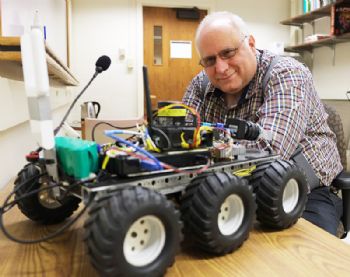
Researchers at Purdue University in West Lafayette, Indiana (
www.purdue.edu), are developing technology that could allow robots to learn human language.
The research team, led by associate professor Jeffrey Mark Siskind, has developed three algorithms that enable a wheeled robot (fitted with several cameras) to learn the meanings of words, to use words to generate a sentence and to comprehend sentences.
The team ran numerous trials on an enclosed course containing objects such as a chair, a traffic cone and a table.
Professor Siskind said: “Sentences describing the path for the robot to take were provided by on-line sources. An operator then steered the robot to follow the paths described by the sentences.
“Using the algorithms, the robot was able to recognise words associated with objects on the course and words associated with directions of travel based on its sensory data.
"It was able to generate its own sentences to describe the paths it had taken. It was also able to generate its own sentences to describe a separate path of travel on the same course.
"The robot aggregated its sensory data over numerous experiences. By learning the meaning of various words, the robot took a step above conventional autonomous vehicles that work by using a vehicle’s electrical system to control driving based on a computerised map of existing roads.”
The team is now working on scaling up the robot and giving it the ability to handle a wider range of situations and recognise a greater variety of words and phrases.
“It’s our hope that this technology can be applied to a host of applications in the future, potentially including autonomous vehicles,” said the professor.